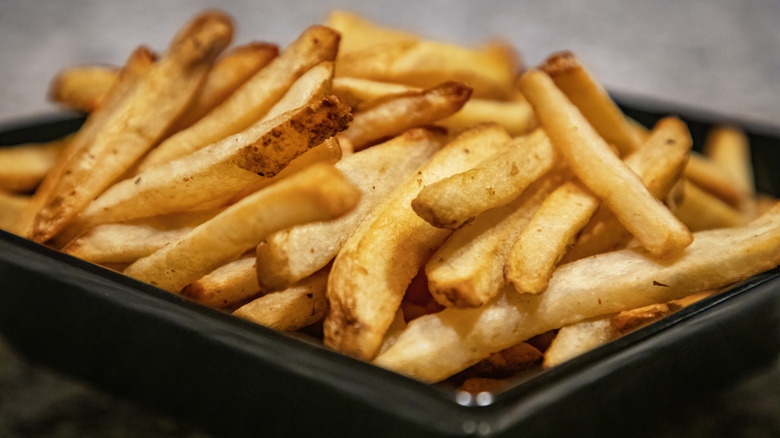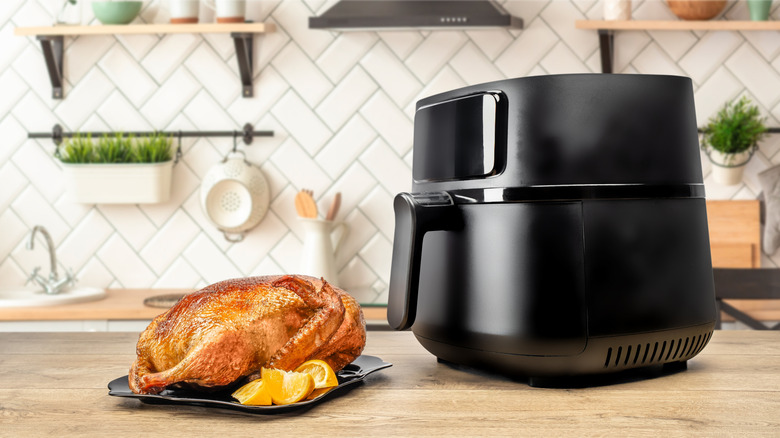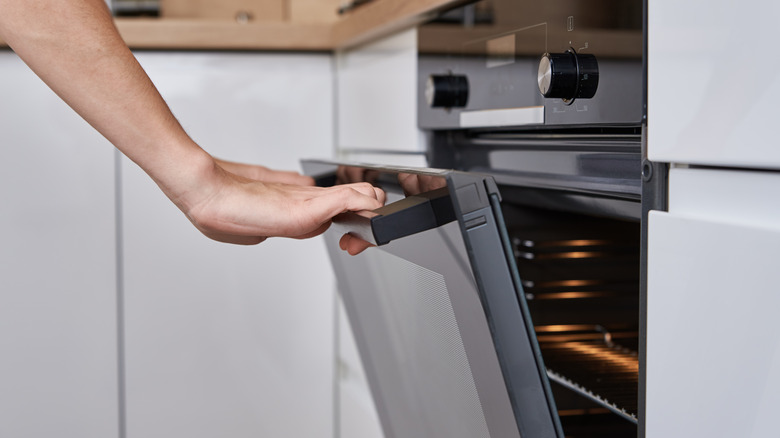Convection Oven Vs Air Fryer: Is There Even A Difference?
For the most part, convection ovens and air fryers seem like they're doing the same thing: Circulating hot air to get food cooked fast and crisp. And, in a broad sense, they kind of are. But if you've ever wondered why your Brussels sprouts come out perfectly golden in an air fryer and just kind of ... shriveled ... in your convection oven, the differences start to matter. A lot.
The main distinction comes down to size, speed, and intensity. Air fryers are compact and designed to blast food with concentrated heat in a small space, leading to quicker cook times and extra-crispy edges. Convection ovens, while also fan-equipped, operate on a larger scale and are better suited for tasks like roasting a whole chicken or baking a sheet of cookies. They take longer to heat up, have more even (but gentler) airflow, and can handle much larger quantities. So, while they're both hot air hustlers, air fryers and convection ovens are definitely not interchangeable.
The small but mighty air fryer
Air fryers work like a turbocharged convection oven that's been shrunk down to countertop size. The smaller chamber means food sits closer to the heat source and benefits from more direct, high-speed airflow. That's what gives you that deep-fried crisp without needing a drop of oil. It's also why air fryers cook much faster than their full-sized cousins; You're not trying to heat up a whole oven, just a little pod. It really doesn't take much time to use your air fryer to the fullest.
Because of this design, air fryers are perfect for quick, weeknight meals. Frozen french fries can be done in 10 to 15 minutes and turn out super crispy. Chicken wings are juicy on the inside, crunchy on the outside. Reheating leftovers isn't a nightmare, and they come out with a better texture than you could ever dream of from the microwave. The tradeoff, of course, is in capacity. You'll be working in small batches, which can be challenging if you're feeding a group. But for solo dinners or small households, the air fryer's speed and simplicity makes it a fan favorite — literally.
Just remember; Because the cooking element is usually placed right above the food, that intense heat can take your food from golden to burnt, real quick. But if you learn your air fryer's sweet spots, it becomes a ridiculously reliable tool. At this point, it's safe to say that air fryers deserve the hype.
Convection ovens are still the heavy hitters
Convection ovens may not enjoy the same level of buzz as air fryers, but they are the OGs when it comes to using circulated air for even cooking. These full-sized ovens use fans to distribute heat more evenly than traditional ovens, making them ideal for roasting, baking, and dehydrating. But they're not just good at cooking; They're good at multitasking. You can bake a sheet pan of cookies, a lasagna, and a loaf of bread all at once without having to rotate racks every five minutes.
The larger size is an advantage for batch cooking or entertaining — and many now come with air fry settings. That means you get the best of both worlds; The convenience of air frying with the capacity of a full oven. Sure, convection ovens take longer to preheat, and the results might not be quite as crispy as what you'd get from a dedicated air fryer, but you're gaining versatility and volume.
So, is one better than the other? Not really. It's less about which one is superior and more about how you cook. If you want quick crispness in a small batch, countertop-friendly air fryers make all sorts of unique foods. But if you want to roast two trays of vegetables and bake dessert at the same time? The convection oven wins every day of the week. Both appliances have their strengths; It's just a matter of which tool suits the meal at hand.


